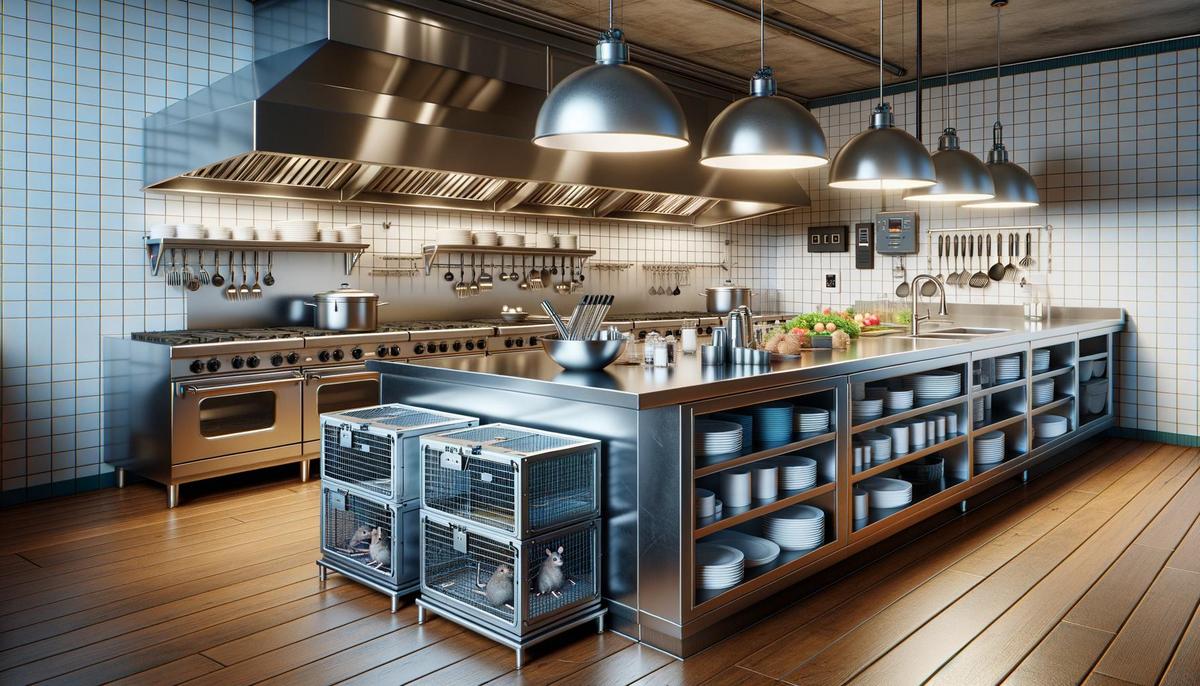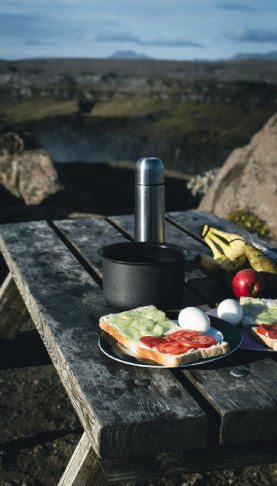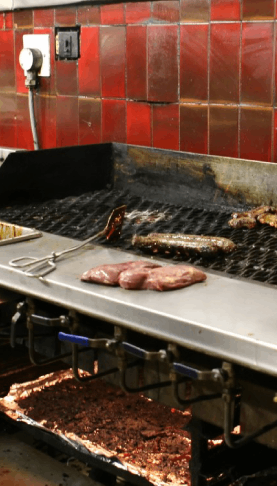Yes. To protect your restaurant kitchen in Dallas from rodents, seal every gap, keep food in tight containers, clean on a strict schedule, monitor with traps and logs, and respond the same day to any sign of activity. If you need outside help, start with Dallas rodent control so you get local service that fits your building and weather. That is the short version. The longer story is where results stick.
Why rodent control matters to kitchens that cook
If you cook for a living, you already know this. Rodents do not only chew bags and scare staff. They contaminate worktops, spread bacteria, and create risk during health inspections. One sighting can ripple through the team. Someone hesitates to open a bin. A server whispers. Morale dips. I have seen it happen during a Friday rush, and it was not pretty.
Dallas has heat, short cold snaps, big storms, and long construction seasons. Those shifts push rodents to move. They look for shelter, water, and starch. A kitchen gives them all three unless you close the door on them, in every sense. The good news is simple. You can set up a system that prevents most of it. Not perfect, but strong. And strong beats perfect every time, because perfect never ships.
Rodents follow food, water, and shelter. Remove even one leg of that stool and activity drops fast.
A simple system that keeps rodents out
I like five steps. Easy to remember. You can train on it. You can measure it.
- Block entry
- Deny food and water
- Monitor daily
- Remove quickly
- Document and improve
Let me break these down with kitchen reality in mind.
Block entry
Start outside. Walk the full building. No clipboards yet. Just look and poke with a pen. If a pencil fits, a mouse can fit. If a thumb fits, a rat can fit. Sounds simple. It works.
- Door sweeps: Light under a door means a gap. Install metal sweeps that touch the floor. Rubber tears fast under heavy use.
- Weather strip: Side gaps on back doors are common. Replace crushed gasket. Check the latch so the door closes tight.
- Dock plates and bumpers: Gaps along dock edges and trailer seals are prime entry points. Add brush seals where plates meet the floor.
- Utility lines: Seal around pipes, conduit, and hood penetrations with steel wool backed by mortar or copper mesh with sealant. Foam alone is a snack.
- Vents and louvers: Add 1/4 inch metal hardware cloth behind grills. Keep air flow. Stop rodents.
- Foundation cracks: Fill with quick set cement. Recheck after rains.
- Roof lines: If you share space with other tenants, check shared walls and the roof curb around HVAC.
Inside, think in zones. Dry storage. Prep. Cookline. Dish. Bar. Each zone needs tight walls to floor junctions and tight penetrations behind equipment. Casters help you pull units forward, which helps you see gaps. If you cannot move a unit, ask for quick-release gas lines or water lines with shutoffs that allow movement. It pays back in cleaning and control.
Foam is for air, not for rodents. Use metal first, sealant second. That small order detail saves you later.
Deny food and water
Rodents can live on crumbs. That is annoying. It also gives you a clear job. Cut crumbs. Kill water. Lock bulk food.
- Dry goods: Move flour, rice, sugar, and masa to tight bins with latching lids. Label and date. Keep bins off the floor at least 6 inches on racks.
- Produce: Do not leave potatoes or onions on the floor. Use slotted racks to reduce moisture buildup.
- Protein: Keep walk-in doors closed. Fix broken gaskets. Even condensation can attract activity.
- Grease: Clean behind and under fryers and griddles nightly. Wipe splash zones on walls. Service the grease trap on schedule.
- Waste: Tie liners, close dumpster lids, and keep the pad clean. If your hauler misses a pick-up, call that hour. Overflow is an invitation.
- Water sources: Fix drips at pre-rinse and hand sinks. Bleed lines on soda systems that drip. Mop sinks need tight seals too.
I like to walk the line at close with a small flashlight. You see what overhead lights miss. Also, it builds a habit. The team learns where crumbs hide.
Monitor daily
You cannot fix what you do not see. Put traps and monitors where rodents travel. They follow edges. They avoid open fields.
- Glue boards: Use behind equipment, under shelves, and near doors. Change weekly or sooner if dirty.
- Snap traps: Place along walls in protective covers. Keep them out of sight lines from guests.
- Exterior stations: Lock, label, and keep bait fresh if used outdoors. Inside food rooms, traps beat bait. You want quick removal, not dead mice behind walls.
Map your placements. A simple grid with numbers is fine. When something hits, you note the number. Trends appear. I have watched a single weak door sweep light up a row of traps. Fix the sweep and the hits stopped. Data helps you pick that up fast.
If you do not map traps, you guess. If you map traps, you learn. The time cost is tiny compared to a point loss on an inspection.
Remove quickly
Speed matters. A sprung trap sitting for days does two bad things. It teaches rodents to avoid it. It also creates odors and a cleaning job that no one wants. Assign who checks traps and when. Opening and close are best. Two looks a day sounds like a lot. It is not. It takes minutes when it is a habit.
Inside, use snap traps and glue boards. Outside, bait can help, but only in locked stations away from doors and in line with label laws. Keep bait out of kitchen zones. I have seen bait blocks pulled into a prep area by a curious rat. That was a hard day for the chef.
Document and improve
Logs feel boring. They save you time. They help you prove control during inspections. They also help you spot patterns. Maybe Monday mornings are messy because the late Sunday crew is thin. Maybe dry storage gets hits every time you stack bags on the floor. You see it in the log, then you change the setup.
What inspectors look for in Dallas
You are not running a lab. You are cooking. Even so, city inspectors watch for clear signs that control is in place. They want to see closed holes, clean floors, covered containers, and written records. They also look at dumpsters, grease, and how deliveries are handled. If you handle these basics, you bounce back fast from a surprise visit.
- No gnawed bags or droppings in dry storage
- No gaps at doors or walls
- Food covered, labeled, dated, off the floor
- Clean floors and corners, no heavy buildup
- Trap logs with dates, initials, and findings
- Dumpster lids closed, pad clean, no pooled grease
I sat through an inspection where the only note was a small gap under the back door. The sweep was on order. We showed the PO and the log. No points lost. Preparation helps.
Entry points you might be missing
Drains and floor sinks
Large floor drains can become small highways. Keep grates tight. Fit screens where needed. Backflow from storms can push debris and attract pests. Cleaning the P-traps and using drain nets on prep sinks helps more than people think.
Ceiling voids and gaps by hood
Above the cookline, there are often niches and gaps where low-voltage lines enter a plenum. Close any openings larger than a pencil with metal screen and high temp sealant. Ask your hood vendor to leave it tight after service. Sometimes they open a panel and do not close it back to spec.
Shared walls and empty suites
If a neighboring unit sits empty, it can become a nest site. Meet the property manager. Agree on a shared exterior station layout. Share notes. It is not fun, but it works. I think this is underused by many operators.
Daily, weekly, and monthly routines that work
You do not need to reinvent your SOP. Add a few checks, make them visible, and give them owners. Small, consistent steps beat a burst of deep cleaning once a quarter.
Nightly close checklist
| Task | Zone | Owner | Time |
|---|---|---|---|
| Pull line equipment, scrape and mop edges | Cookline | Line lead | Close |
| Wipe legs, wheels, and wall base | Cookline | Dish or porter | Close |
| Seal all bins, count lids on | Dry storage | Prep lead | Close |
| Check traps, log hits, reset | All zones | Manager | Open and close |
| Tie liners, wipe dumpster lip, close lids | Back dock | Porter | Close |
| Back door light test, lock and sweep check | Exit | Manager | Close |
Weekly tasks
| Task | Why it helps | Notes |
|---|---|---|
| Rotate stock, FIFO audit | Old bags attract gnawing | Mark dates on tape, large print |
| Deep clean under shelving | Crumbs hide at wall base | Use a vacuum first, then mop |
| Inspect exterior stations | Catches activity before entry | Replace wet bait, note freshness date |
| Check weather strip and door sweeps | Gaps creep over time | Keep spare sweeps on site |
Monthly items
- Walk roof and look at curbs, screens, and conduits
- Audit trap map against actual placements and update
- Measure gap sizes and photo log before and after fixes
- Review hits by zone with the team for 10 minutes
Receiving and supplier control
Most kitchens focus inside and at the dumpster. Fair. Still, a lot of rodent risk rides in with pallets and cases. Pallets sit in warehouses. Sometimes on the ground. Sometimes outdoors. You cannot control that part, but you can control the handoff at your door.
- Inspect the first two cases on each pallet. Look for droppings, hair, or gnaw marks.
- Reject damaged bags. Be polite, but firm. Your staff should feel supported when they send back a bad case.
- Break down cardboard fast and stage it far from food areas. Cardboard holds smells and gives shelter.
- Rotate suppliers when repeated issues happen. Data in your log helps that talk.
I once watched a prep cook spot a small tear on a 50 pound flour bag. She stopped, pointed it out, and we caught a trail of flour on the pallet deck. We sent the bag back. That one minute saved hours of cleanup risk later.
Layout and small design choices
A few inches here or there can change your whole control picture. You will not rebuild your kitchen for this, I know. Think small changes that fit normal upgrades.
- Raise shelving so brooms can reach under. Six inches clear is minimum. Eight inches is easier.
- Add casters to heavy prep tables. Locking wheels still move for cleaning.
- Seal wall to floor joints with cove base. This removes a crumb line and makes mopping faster.
- Pick bins with smooth interiors. Ridges hold flour. Smooth bins wipe clean in seconds.
- Use light colored floor mats so crumbs show. Dark mats hide problems.
Outside matters more than it seems
If the outside is clean, the inside stays clean longer. Rodents travel lines. Fences. Walls. Pipe chases. Trash lines.
- Keep vegetation trimmed 18 inches from the building. Rock or clean soil strips beat mulch.
- Set exterior stations along walls, not in the open. Space them about 20 to 30 feet apart around active sides.
- Store single-use items indoors. To-go lids and cutlery on the dock invite rummaging.
- Fix standing water after rains. Puddles near doors draw traffic.
Training that sticks with busy crews
Your cooks and dish team care about food and speed. They do not want a lecture on pest biology. Keep it short. Tie it to their station. Praise wins in public. Correct misses in private. This is simple management, but it helps.
- One-minute huddles: Show a photo of a gap or a perfect bin setup. Ask what they see.
- Micro-roles: Pick a “trap captain” for a month. Another person owns bin lids.
- Visual aids: Stickers near doors that read “No light. No gap.”
- Gamify a little: Crew that keeps zero hits for two weeks gets first pick of stations.
I am cautious with games. People cook better when they feel trusted, not watched. Still, a small reward can help form a habit.
Metrics that actually matter
You can run your kitchen on two or three simple measures. No dashboards needed.
| Measure | Target | Why it matters |
|---|---|---|
| Trap checks logged per day | 2 passes, initials present | Confirms the habit and gives trend data |
| Door gap light test | Zero light under or around | Stops new entry |
| Bin lids closed count at close | 100 percent | Denies food quickly |
| Dumpster lid closed, pad clean | Yes and photo weekly | Prevents outside feeding |
Common mistakes that keep problems alive
- Using foam alone to seal. It looks full. It is not.
- Baiting inside the kitchen. It creates hidden carcasses and odors.
- Skipping trap maps. You forget where traps sit, and then you cannot trend activity.
- Storing on the floor “for a minute.” That minute turns into a shift.
- Leaving the back door propped open. Airflow is nice. Rodents agree.
Signs you have activity now
You might already know the big signs. Droppings. Odor. Scratching. Here is a quick guide that I keep handy.
| Sign | Mouse vs Rat | Where to look first |
|---|---|---|
| Droppings | Mouse small like rice, rat larger like raisins | Under shelving, behind line, near dry goods |
| Gnaw marks | Mice prefer small holes, rats create larger rough edges | Bag corners, door bottoms, baseboards |
| Tracks and rub marks | Rats leave darker greasy rubs | Along walls, pipes, and around dumpster rails |
| Noises | Mice are lighter, rats heavier thumps | Ceiling voids, behind equipment, near dish area |
What to do in the first 24 hours after a sighting
This part matters. The team looks to you. Stay calm and follow a quick checklist.
- Log the sighting with time, place, and who saw it.
- Set or reset traps along the nearest two walls, five to ten feet apart.
- Inspect for fresh droppings within 15 feet. Clean with disposable towels and sanitizer.
- Close obvious gaps now. Even a temporary metal plate helps before a permanent fix.
- Audit food storage for open bags or lids off. Correct on the spot.
- Call your service partner if hits continue or if you see rats.
Do not announce it to the full staff over the line. Handle it with a small crew. You still want vigilance, but panic does not help anyone cook better.
How weather in Dallas shifts your plan
Summer heat dries up natural water sources. Rodents move toward dish areas and mop sinks. Focus on leaks and standing water. After heavy rain, you can see new ground cracks and door settling. Recheck sweeps. In short cold snaps, rodents push hard toward warm kitchens. Extra checks at dusk help during those weeks. It is the same plan, just a little tighter.
Working with a pro without losing control
A service partner can help speed your setup and handle tougher cases. I still think the kitchen owns the plan. You cook. You close. You catch issues first. Use a partner for structural work, exterior stations, and program audits. Ask them to train your leads. Ask for clear trend reports. Keep a copy on site and a digital copy with photos. If the service feels like a mystery, push for clarity. Good partners like simple, transparent programs.
Costs and where money actually saves money
Spending a little up front saves a lot. Here is a rough way I frame it for owners. Numbers vary by size, but the pattern holds.
| Item | Approximate spend | Payoff |
|---|---|---|
| Metal door sweeps and gaskets | 200 to 500 per door | Blocks daily entry, reduces ongoing hits |
| Trap kit and covers | 150 to 300 | Lets you monitor and respond fast |
| Sealing supplies, mesh and sealant | 100 to 250 | Permanent fixes, fewer call backs |
| Exterior station setup | 300 to 800 | Stops activity before entry |
| Staff training time | One hour monthly | Fewer misses, cleaner close, smoother inspections |
A single bad inspection or comped service from a shutdown day can cost more than the whole list. That stings. Still, I prefer simple math to fear.
What your guests never see but feel
Guests do not see your trap map. They feel clean floors, fresh air, and fast service. Rodent control supports that. Less clutter means faster moves on the line. Tight storage means less time hunting for a bag of flour. You get speed and safety in one go. That is the kind of quiet win that builds a loyal base. Not hype. Just steady delivery.
A quick script for your managers
If a team member reports a sighting, give them a simple script so they feel heard and guided.
- “Thank you for saying something. Let us log it now.”
- “Please keep lids on while I handle the traps.”
- “I will check the door gap and storage right after this ticket.”
Short. Clear. Action oriented. People copy the tone you use.
How to talk to your landlord or property team
Some fixes sit outside your suite. You still need them. Use photos. Use short notes. Tie requests to simple risks and dates. For example, “Back door sweep shows 1/4 inch light on right. Two traps hit this week inside 6 feet of that door. Request install of metal sweep by Friday.” You are not being pushy. You are protecting your business and your guests. Most landlords listen when you are direct and brief.
Small product choices that help
- Clear bins over opaque. You can see lid status at a glance.
- Bright task lights under shelves. Lighting beats guessing.
- Long handle scrapers for edges. Faster means it gets done.
- Color coded towels. One for front, one for floor, one for bins.
I sometimes carry a pocket light and a mirror on a stick. Feels old school. Works every time under low equipment.
Case study style, without the fluff
A mid-size Dallas taqueria called me after two mouse sightings by the dish area. Here is what we did in seven days.
- Day 1: Trap map, 24 placements along walls, snap traps inside covers, two glue boards behind each upright cooler.
- Day 2: Replaced back door sweep, sealed two conduit gaps with copper mesh and sealant.
- Day 3: Swapped open flour bags to latching bins, raised storage 8 inches with new rack feet.
- Day 4: Moved cardboard breakdown to a cart outside the dock, not near dry storage.
- Day 5: Two hits recorded near mop sink, fixed a slow leak at pre-rinse faucet.
- Day 6: No hits, cleaned under line, pulled fryers with casters.
- Day 7: Training huddle and new close checklist taped at the time clock.
They went 5 weeks with zero hits, then had a single hit near the back door after a storm. The sweep was intact. We found a small gap at the bottom hinge side where the frame was out of square. A shim and new gasket fixed it. That is the real world. Not perfect. Just better each week.
Food safety tie-ins for cooks and chefs
Why bring this to a site about cooking and restaurants? Because rodent control is part of food quality. The same habits that give you clean flavors also cut pest risk.
- Mise en place with tight lids keeps aromas down. That makes your station tidy and less attractive to rodents.
- Clean edges on the grill let you control heat and reduce splatter. Less grease, fewer pests.
- Walk-in discipline, fast door closes, and no open pans cool product right and prevent condensation. Rodents are drawn to moisture and starchy smells.
Great kitchens feel calm because the basics are handled. Rodent control is one of those basics.
If you change only three things this week
I like simple starts. If your week is packed and you can only act on three items, pick these.
- Install a metal door sweep on the back door and fix any side light.
- Move flour, rice, sugar, and similar to tight, labeled bins with lids.
- Create a trap map, place along walls, and log checks at open and close.
Do these, and you will see fewer crumbs, fewer tracks, and more control fast. Then you can add the next layer when time opens up.
One more reminder on bait
Bait has a place. Outside. In locked stations. With a clear map and service cycle. Inside a kitchen, bait creates risk. Traps let you remove the cause and clean the zone. If someone tells you to throw bait blocks behind a fryer, say no. If that sounds blunt, I think blunt is fair here.
Keep suppliers honest with polite pressure
Good partners fix problems. If a supplier brings torn bags twice, log it, send photos, and ask for a plan. If they brush you off, rotate. There are many options. Your team should not fight rodents that arrived on a pallet you pay for.
Final thought before service
Do the simple things right. Keep gaps closed. Keep food sealed. Keep eyes on traps. When in doubt, clean the edges. It is not fancy. It works. And it makes your kitchen a better place to cook, which is the point.
Q and A
What is the single habit that cuts rodent risk the fastest?
Close the back door gap and check it nightly with a light test. That one habit stops entry, which reduces everything else. Then pair it with sealed bins for flour and rice. If you can only do two things this week, do those two. The rest of the plan gets easier after that.













